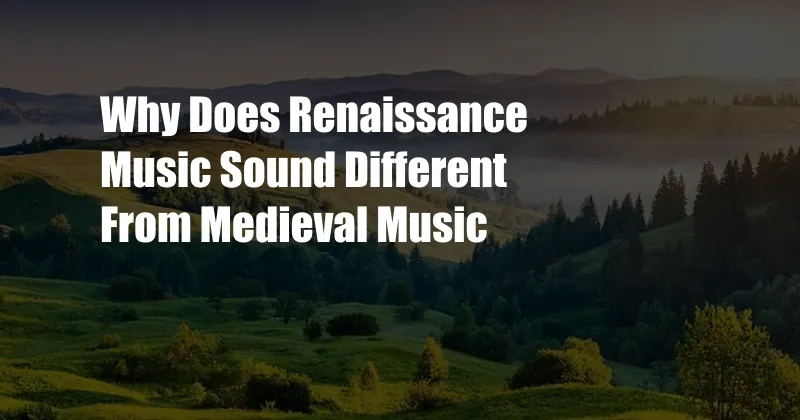
Why Does Renaissance Music Sound Different from Medieval Music?
Renaissance music, emerging in the 15th century Europe, brought a significant transformation in musical style compared to its predecessor, medieval music. This evolution was influenced by various factors, including the rise of humanism, the invention of printing, and the availability of new instruments.
The Influence of Humanism
Humanism, a philosophical movement that emphasized the importance of human experience, played a crucial role in the shift towards Renaissance music. Renaissance composers sought to express the emotions, thoughts, and experiences of individuals through their music, moving away from the religious and liturgical focus of medieval music.
Polyphony and Contrapuntal Texture
One of the most striking differences between Renaissance and medieval music lies in the use of polyphony. While medieval music often featured a single melodic line accompanied by a drone or minimal harmony, Renaissance music embraced polyphony, a technique that involves the simultaneous combination of multiple independent melodic lines. This created a richer and more complex musical texture.
The Role of Instrumentation
The invention of new instruments during the Renaissance period further contributed to the distinctive sound of its music. Instruments like the lute, recorder, and harpsichord became popular, allowing composers to explore different timbres and ranges. These new instruments also facilitated the development of instrumental music, as opposed to purely vocal music that was prevalent in the Middle Ages.
Secularization of Music
Another key factor in the evolution of Renaissance music was the rise of secularism. Composers began to write music for non-religious purposes, such as entertainment, dance, and personal expression. This led to a proliferation of genres, including madrigals, chanson, and dance music, each with its own characteristic style and form.
The Rise of Music Notation
The invention of music notation during the Renaissance revolutionized the way music was composed, performed, and preserved. The development of movable type printing made it possible to produce musical scores that were more accurate and accessible than ever before, allowing composers and musicians to share their ideas more effectively.
The Legacy of Renaissance Music
The influence of Renaissance music continues to be felt in Western music today. Its incorporation of polyphony, secularism, and advanced instrumentation laid the foundation for Baroque, Classical, and Romantic music. Composers such as Palestrina, Josquin des Prez, and Orlando di Lasso continue to be celebrated for their groundbreaking contributions to the development of Western music.
Tips for Understanding Renaissance Music
If you’re interested in exploring Renaissance music, here are a few tips:
- Listen to recordings: There are many recordings available online and in music stores that can help you get a feel for the sound of Renaissance music.
- Attend concerts: If you have the opportunity, attend a concert featuring Renaissance music. This is a great way to experience the music live and in its original context.
- Read about the period: There are many books and articles available that can provide you with more information about the Renaissance period and its music.
FAQs about Renaissance Music
-
What is the difference between Renaissance and medieval music?
Renaissance music uses polyphony, secularism, and advanced instrumentation compared to Medieval music. -
Who are some famous Renaissance composers?
Palestrina, Josquin des Prez, and Orlando di Lasso are notable Renaissance composers. -
What is the significance of music notation in Renaissance music?
Music notation facilitated the accurate composition, performance, and preservation of Renaissance music.
In conclusion, the differences between Renaissance music and medieval music lie in the use of polyphony, instrumentation, secularization, and the rise of music notation. These factors contributed to the unique sound, complexity, and influence of Renaissance music, which continues to be celebrated and enjoyed today.
Do you have any further questions about Renaissance music? Leave a comment below, and I’ll be happy to assist you.